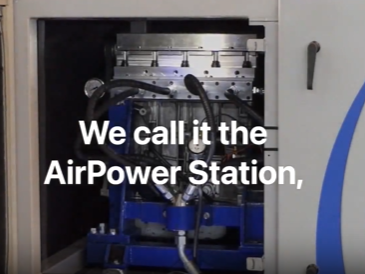Powering the Future: A Look at the World’s Largest Renewable Energy Facilities
The fight against climate change and the growing demand for clean energy have spurred the development of incredible renewable energy facilities around the globe.
These massive projects showcase the potential of solar, wind, hydro, and other renewable sources to power our future.
The fight for a sustainable future is being fueled by giants. The world’s largest renewable energy facilities stand as testaments to human ingenuity and our growing commitment to clean power. From the sprawling solar parks of India to the behemoth wind farms of the UK, these projects showcase the immense potential of renewable sources to power our planet.
India takes center stage with two solar giants – Bhadla Solar Park, the undisputed king with a capacity to power over 1.3 million homes, and Pavagada Solar Park, not far behind at 2.05 GW. China enters the picture with Huanghe Hydropower Hainan Solar Park, a unique hybrid marvel combining solar and hydropower for optimized energy production. Meanwhile, the UK and China battle it out in the wind sector, with Hornsea 2 Offshore Wind Farm boasting 1.386 GW and Gansu Wind Farm showcasing its 8 GW onshore might.
These are just a glimpse of the incredible strides being made in renewable energy. These titans pave the way for a future powered by clean sources, but remember, smaller-scale solutions also play a crucial role. It’s a collective effort, and every step towards renewables, big or small, brings us closer to a sustainable tomorrow.
Key Indicator for World’s Largest Renewable Energy Facilities
Defining the “key indicator” for the world’s largest renewable energy facilities depends on your perspective and goals. Here are some different ways to approach it:
Technical performance:
- Capacity: Measured in Gigawatts (GW), it represents the maximum power output a facility can theoretically generate. This is the most common metric for comparing the sheer size of facilities.
- Capacity factor: It measures the actual energy produced versus its maximum potential, expressed as a percentage. A higher capacity factor indicates better efficiency and utilization of resources.
- Energy yield: Similar to capacity factor, but based on energy produced per unit installed capacity (e.g., kWh/kW). It compares facilities based on their efficiency in capturing and converting renewable energy.
Project success:
- Return on Investment (ROI): Evaluates the financial viability of the project, considering initial costs, energy production, and operational expenses.
- Levelized Cost of Energy (LCOE): Measures the average cost per unit of electricity generated over the project’s lifetime, reflecting operational efficiency and affordability.
- Environmental impact: Measures the facility’s impact on carbon emissions, land use, and biodiversity, highlighting its contribution to sustainability goals.
Societal impact:
- Job creation: The number of jobs created during construction and operation of the facility, contributing to local economic development.
- Energy security: The facility’s contribution to a country’s or region’s energy independence and reduced reliance on fossil fuels.
- Community engagement: The level of involvement and benefits provided to local communities around the facility.
Ultimately, the “key indicator” depends on your specific interests and priorities. If you’re focused on technical performance, capacity and capacity factor are crucial. If financial viability matters most, ROI and LCOE take center stage. And if your concern is sustainability, environmental impact and community engagement become vital.
Remember, no single metric defines the “best” facility. A truly successful project balances technical performance, financial viability, and positive societal impact.
World’s Largest Renewable Energy Facilities
Let’s take a tour of some of the biggest and most impressive Renewable Energy Facilities
Solar Giants:
- Bhadla Solar Park, India: Taking the crown as the world’s largest solar park, Bhadla boasts a staggering capacity of 2.25 gigawatts (GW), spread across a sprawling 14,000 acres in Rajasthan. This behemoth can power over 1.3 million homes!
- Huanghe Hydropower Hainan Solar Park, China: Combining the might of solar and hydropower, this unique hybrid park in China integrates a 2.2 GW solar power plant with a 1 GW pumped-storage hydropower facility. This synergy optimizes energy production and storage.
- Pavagada Solar Park, India: Another Indian marvel, Pavagada comes in at a close third with a capacity of 2.05 GW. Located in Karnataka, it features over 3.4 million solar panels spread across 13,000 acres, generating enough electricity to power 500,000 homes.
Wind Warriors:
- Hornsea 2 Offshore Wind Farm, United Kingdom: Holding the title of the world’s largest offshore wind farm, Hornsea 2 in the North Sea packs a punch with a capacity of 1.386 GW. Its 167 turbines can power over 1.3 million homes, significantly contributing to the UK’s renewable energy goals.
- Gansu Wind Farm, China: This onshore titan in China boasts a capacity of 8 GW, generated by over 7,000 wind turbines spread across an area larger than Luxembourg. Its sheer scale highlights the potential of wind power for large-scale electricity generation.
Hydropower Heros:
- Three Gorges Dam, China: The undisputed king of hydropower, the Three Gorges Dam on the Yangtze River generates a whopping 22.5 GW of electricity, enough to power millions of homes and businesses. While its environmental impact is debated, its contribution to China’s renewable energy portfolio is undeniable.
- Itaipu Dam, Brazil and Paraguay: A marvel of international cooperation, the Itaipu Dam on the Paraná River boasts a capacity of 14 GW, shared between Brazil and Paraguay. This hydroelectric giant provides clean energy to both countries and showcases the potential of cross-border collaboration.
Largest Renewable Energy Facilities by Various Metrics
| Metric | Facility Name | Location | Capacity (MW) | Annual Generation (TWh) | Area (km²) | Notes |
|---|---|---|---|---|---|---|
| Hydropower (Installed Capacity) | Three Gorges Dam | China | 23,000 | 100 | – | World’s largest hydroelectric facility. |
| Hydropower (Annual Generation) | Three Gorges Dam | China | 23,000 | 100 | – | Maintains its lead in energy production. |
| Solar PV (Installed Capacity) | Mohammed bin Rashid Al Maktoum Solar Park | United Arab Emirates | 5,625 (expected upon completion) | – | 70 | Currently under construction, will surpass Noor Abu Dhabi upon completion. |
| Solar PV (Annual Generation) | Longyangxia Dam Solar Park | China | 2,200 | 34 | – | Largest operational solar park currently. |
| Wind (Installed Capacity) | Hornsea 2 Offshore Wind Farm | United Kingdom | 1,386 | – | 462 | World’s largest operational offshore wind farm. |
| Wind (Annual Generation) | Gansu Wind Farm Cluster | China | – | 200 | – | Cluster of multiple wind farms, making it the largest producer. |
| Geothermal (Installed Capacity) | Cerro Prieto Geothermal Field | Mexico | 890 | – | – | Largest single geothermal field. |
| Geothermal (Annual Generation) | Cerro Prieto Geothermal Field | Mexico | 890 | 9 | – | Leads in annual geothermal energy production. |
Additional Considerations:
- Data Availability: Not all facilities consistently report data across all categories. Some values might be estimates or missing.
- Project Stages: Some facilities are under construction or expansion, so capacities and generation might increase in the future.
- Single Facilities vs. Clusters: Some “largest” titles refer to individual facilities, while others encompass clusters of multiple installations.
- Focus on Specific Technologies: This data highlights leading examples in each category, but other notable facilities exist for various renewable energy types.
Data Sources:
- REN21 Global Status Report: [https://www.ren21.net/wp-content/uploads/2019/05/GSR2022_Full_Report.pdf]
- IRENA Renewable Energy Statistics: [https://www.irena.org/publications/2022/Apr/Renewable-Capacity-Statistics-2022]
- IEA Renewables: [https://www.iea.org/energy-system/renewables]
- Individual project websites and news articles
Looking Ahead:
These are just a few examples of the incredible progress being made in the world of renewable energy. As technology advances and investment increases, we can expect even larger and more efficient facilities to emerge, pushing the boundaries of what’s possible and paving the way for a sustainable future.
Beyond the Big:
It’s important to remember that large-scale facilities aren’t the only players in the renewable energy game. Distributed generation, where smaller systems power individual homes and communities, is also crucial for a diverse and resilient energy grid. So, while these giants capture our imagination, let’s not forget the smaller-scale solutions that are also making a big difference.
https://www.exaputra.com/2024/02/worlds-largest-renewable-energy.html
Renewable Energy
Before Trump, “Contempt of Court” Used to Be a Big Deal
 Most Americans, me included, are puzzled as to how the Trump administration can openly thumb its nose to the findings of our courts. Until recently, behavior like this would have wound you up in jail.
Most Americans, me included, are puzzled as to how the Trump administration can openly thumb its nose to the findings of our courts. Until recently, behavior like this would have wound you up in jail.
Renewable Energy
How Households Saved $1,200 with VEU & Air-Con Upgrade?
Renewable Energy
Air Power
 About 20 years ago, a friend asked me if I was aware that cars could run on air. I asked, delicately, what she meant, and she explained that cars can run on compressed air.
About 20 years ago, a friend asked me if I was aware that cars could run on air. I asked, delicately, what she meant, and she explained that cars can run on compressed air.
“Ah,” I replied. “Of course they can. But where does the energy come from that compresses the air?” End of conversation.
Now, it’s back. Now there are enormous swaths of the population who know so little about middle school science that they believe we can put cars on the road, in an ocean of air, and extract energy out of that air to power our automobiles.
If you’re among these morons and want to invest with some heavy-duty fraud/charlatans, here’s your opportunity. They say that it’s “self-sustaining and needs no fuel.” If that makes sense to you, be my guest.
-
Climate Change4 months ago
Guest post: Why China is still building new coal – and when it might stop
-
Greenhouse Gases4 months ago
Guest post: Why China is still building new coal – and when it might stop
-
Climate Change2 years ago
Spanish-language misinformation on renewable energy spreads online, report shows
-

 Greenhouse Gases2 years ago
Greenhouse Gases2 years ago嘉宾来稿:满足中国增长的用电需求 光伏加储能“比新建煤电更实惠”
-
Climate Change Videos2 years ago
The toxic gas flares fuelling Nigeria’s climate change – BBC News
-

 Climate Change2 years ago
Climate Change2 years ago嘉宾来稿:满足中国增长的用电需求 光伏加储能“比新建煤电更实惠”
-

 Carbon Footprint2 years ago
Carbon Footprint2 years agoUS SEC’s Climate Disclosure Rules Spur Renewed Interest in Carbon Credits
-
Renewable Energy5 months ago
US Grid Strain, Possible Allete Sale










